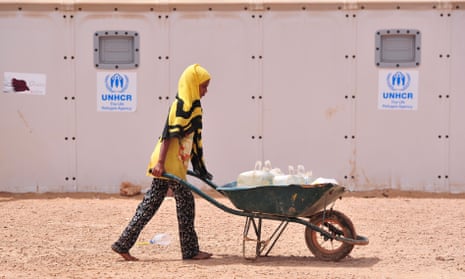Humanitarian assistance policymakers will gather at the World Humanitarian Summit in Istanbul at the end of May. Their agenda is rather slight, and one omission is particularly glaring. In each of the last few years, the financing needs of UN-co-ordinated humanitarian operations were estimated to be $20bn or more. The amount of financing actually provided fell short by some $8-9bn – or up to $15bn according to one estimate. It is anomalous that the world is equipped with global funds to finance action on infectious diseases and climate change, but not humanitarian crises. The centreless nature of fundraising for humanitarian action has long been a problem. The problem should no longer be tolerated.
Global funds act as financing aggregators and distributors, independent of implementing agencies and therefore unburdened by their mandate limitations and resource allocation constraints. They have the flexibility to attract finance from any source and to allocate it to any entity well placed to act effectively. Their fundraising and institutional arrangements are designed to focus high-level attention on the problems that they exist to address. Global funds for infectious diseases and climate change exist because these problems transcend national borders and cannot reasonably be left to the resources of so-called first responder developing countries. Clearly, the same is true of the growing problem of crisis-related human displacement.
It is not just that humanitarian assistance is currently too scarce. It is also for the most part tightly tied to specific crises and implementing organisations and provided within narrow time windows. Even responses to the most protracted crises depend heavily upon annual allocation decisions by an array of donor governments. This is why a central financing capacity is important. However, the existing such capacity within the multilateral system is derisory. A small, UN-specific Central Emergency Response Fund (Cerf) exists to provide rapid financing in the wake of emergencies and help fill gaps in the financing of protracted crises. Another small fund, a Crisis Response Window at the World Bank, exists to provide extraordinary support to low-income countries in the aftermath of severe shocks. Last year, these mechanisms committed funds equivalent to around 7% of the UN’s global humanitarian appeal for 2016.
A global humanitarian fund would replace the CERF and the CRW but would differ fundamentally from them in two respects. It would be far larger in scale, and it would have the capacity to allocate finance to all relevant actors, according to the circumstances. Given current financing shortfalls, it would need to seek sufficient resources, from both public and private sources, to support grant commitments of up to $10bn per annum. Rather than pursuing mandatory contributions or ad hoc annual allocations, the fund would follow the same triennial replenishment process as the World Bank’s concessional financing arm, the International Development Association (IDA).
To ensure quick decision-making, a high level of delegated authority would be vested in the fund’s chief executive officer in relation to allocations to specific crises. The fund’s investment principles and strategies would be overseen, and its impacts monitored, by a board in which developed and developing countries were equally represented. This would mirror the arrangements put in place for the Green Climate Fund, and help secure contributions from non-OECD governments. It would be important that the board guard against mandate creep, as the fund’s resources should complement those raised through specific appeals, particularly UN-co-ordinated appeals. It would hardly be prudent to eschew fundraising on the back of individual crises and hope to deal with all humanitarian financing needs with pre-committed funds.
Would such a fund simply take resources from existing development programmes to finance humanitarian action? Perhaps, but trade-offs are not too much to be feared. Contributions to other global funds have actually helped increase the overall level of international development assistance to its highest level ever, which was reached in 2014. In addition, new investment resources are increasingly becoming available from non-OECD bilateral donors and new multilateral sources, such as the Asian Infrastructure Investment Bank. Further, it is possible that an increasing share of global humanitarian financing will come directly from private individuals via pledge giving, as distinct from ad hoc responses to specific appeals. And finally, as countries increasingly graduate from eligibility for financing on IDA terms, IDA can be expected to shrink. The funds thereby freed up would find a natural home in the global humanitarian fund.
A properly constituted global humanitarian fund would have good prospects of mobilising much more funding for humanitarian crises than is presently available, from both governments and private donors. It would be especially useful for directing funds to where they are most sorely missing – protracted crises out of the spotlight. Its governing body could become an important global policy forum. Its resources, obtained via scheduled replenishments, could be used to benefit both low- and middle-income countries in need, including via blending with finance from the multilateral development banks.
The World Humanitarian Summit provides a good opportunity to debate and register the merits of such a proposal, which is explained more fully here. The idea would ultimately have to be taken forward by governments rather than existing multilateral organisations. Given that the provision of global public goods of this kind is core business for the G20, and that China has laid stress on development as one of the priorities of its hosting year, it might be considered for discussion in September 2016 at the G20 summit in Hangzhou.
Robin Davies is associate director of the Development Policy Centre at the Australian National University. Follow him on Twitter @rad409.
Join our community of development professionals and humanitarians. Follow @GuardianGDP on Twitter.
